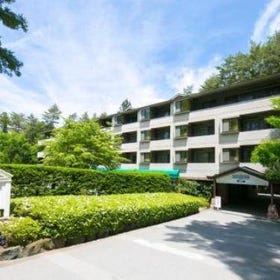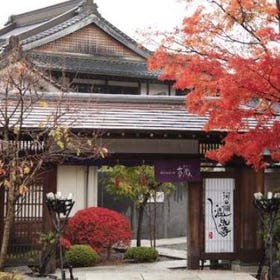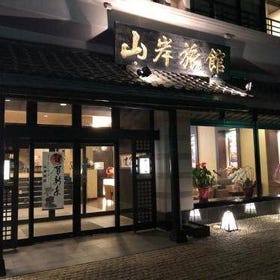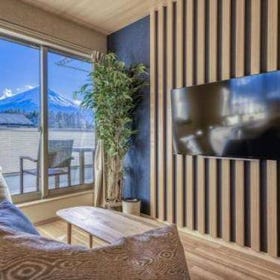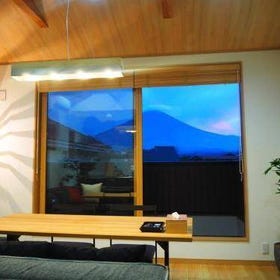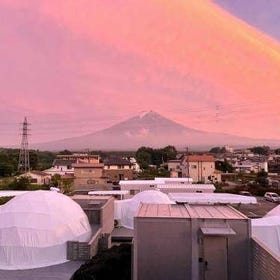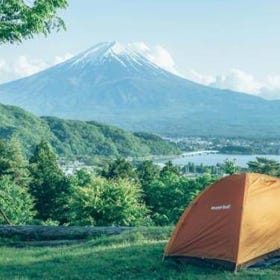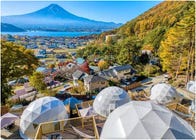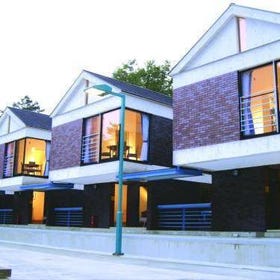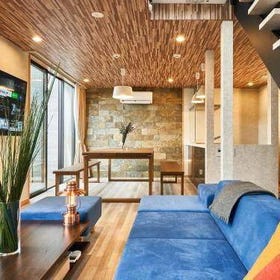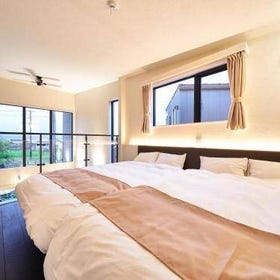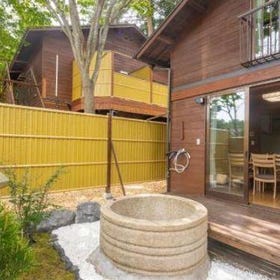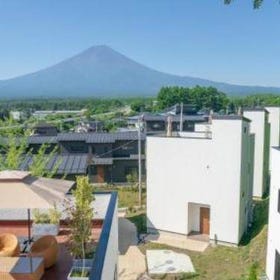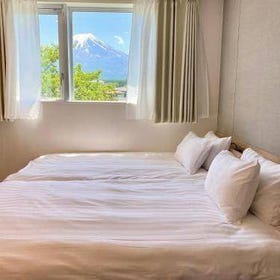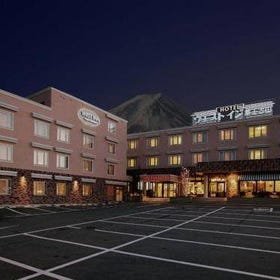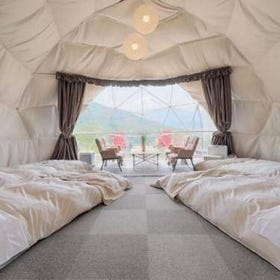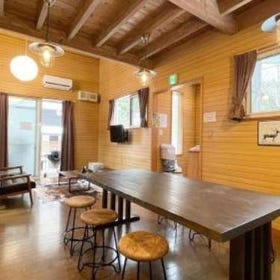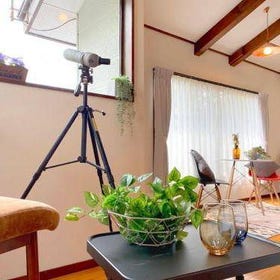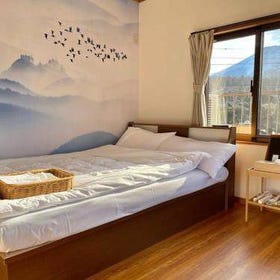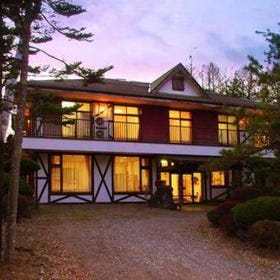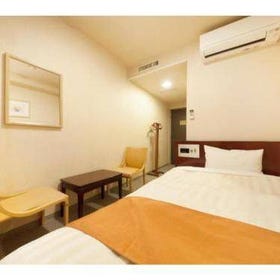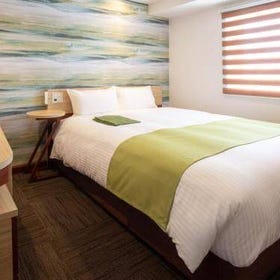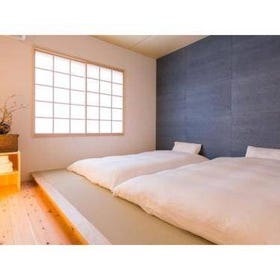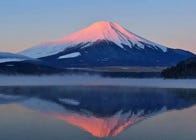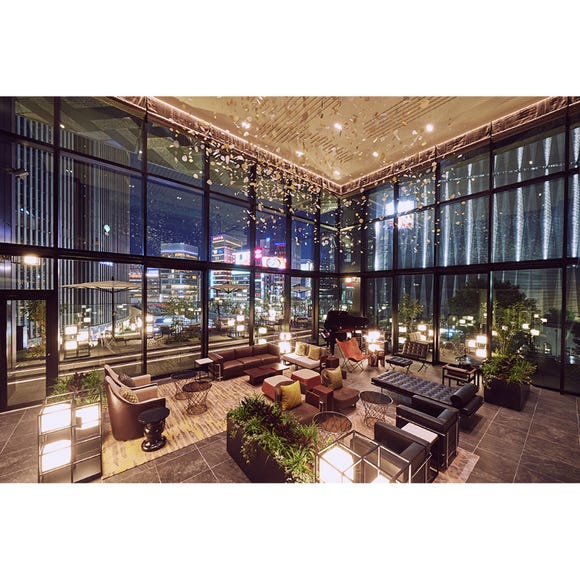
From luxury resorts to cozy inns, knowing where to stay near Mount Fuji can make all the difference in your travel experience. This iconic sacred mountain of Japan abounds in pristine nature, peaceful lakes, gushing springs, and many other scenic sights in all seasons.
Join us as we go inside the top sightseeing areas like Kawaguchiko, Yamanakako, Fujiyoshida, Oshino Village, and Fujinomiya. We'll suggest the best places to stay, as there's too much to see in just one day near Mount Fuji!
Main image: PIXTA
Key points to deciding where to stay near Mount Fuji
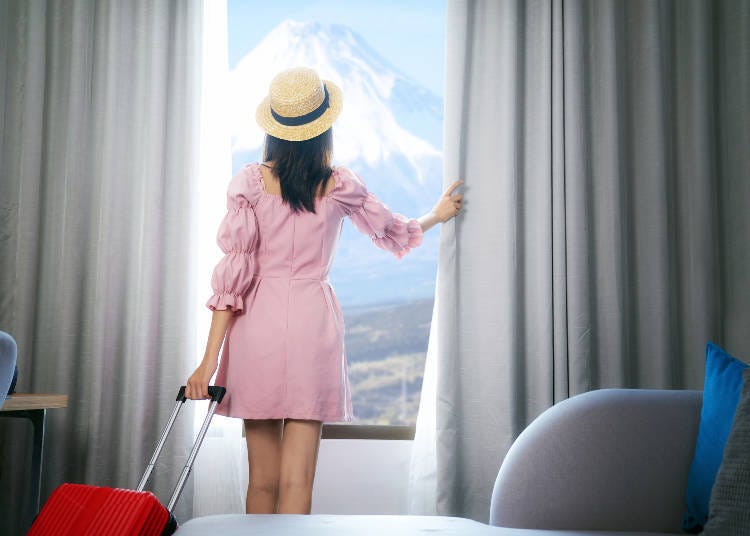
a. Visibility and proximity to Mt. Fuji
Many hotels around Mount Fuji boast unobstructed mountain views. However, consider factors like the clarity of the view, distance from the mountain, and whether you can see it from your room. These aspects can influence the cost and overall experience. Ensure you gather enough information before finalizing your choice.
b. Accessibility and amenities
The Mount Fuji region is vast, but trains have limited stops. If traveling independently, research transportation from your hotel to your destinations. Some places require train transfers or shuttle buses, which might have limited schedules or need reservations. Also, check the availability of nearby shops or convenience stores before booking.
c. Popularity of scenic spots and activities
Different viewing spots around Mount Fuji offer varied experiences. For example, Kawaguchiko is popular with first-timers and has higher-grade hotels with multilingual staff. While pricier, the convenience might outweigh cost for some. In contrast, areas like Fujiyoshida and Fujinomiya provide a traditional Japanese experience. Research nearby attractions and activities to optimize your itinerary.
d. Type of accommodations within the same area
While hotels and hot spring resorts might be top choices, consider apartment hotels, vacation houses, or even camping and glamping. The region offers diverse accommodation options to match your travel style and preferences.
Introducing the main places to stay around Mount Fuji
We've organized the accommodations around Mount Fuji according to five areas, namely, Kawaguchiko, Yamanakako, Fujiyoshida, Oshino Village, and Fujinomiya. We've also included why each area is worth staying in, and we hope this extensive list can help you decide on the places to stay that suit your group best!
1. Lake Kawaguchiko Area
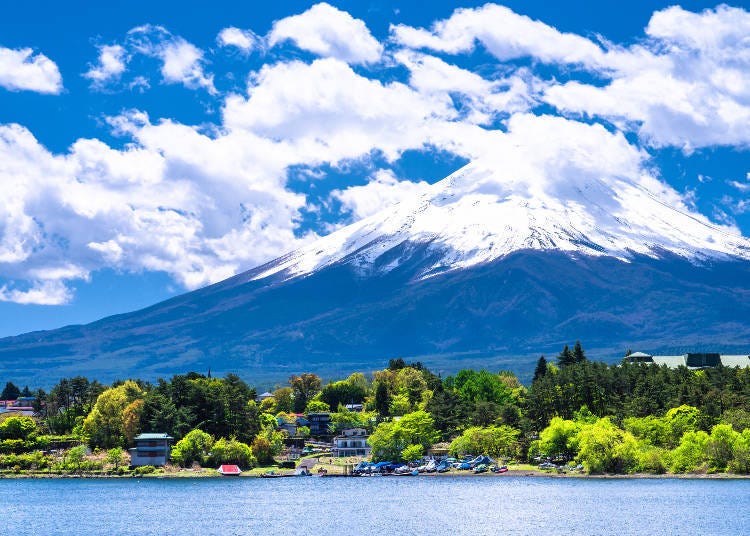
This district contains Lake Kawaguchi, the most famous lake in the Fuji Five Lakes area. It's accessible via direct highway bus from Tokyo and Osaka, or you could also get there using the Fuji Excursion limited express train from Tokyo within two hours. Talk about convenience!
Once you arrive, you'll have your pick of exciting activities to take part in. Board a cruise ship to take in the surrounding sights from the lake or hop on the Mt. Fuji Panoramic Ropeway to get a bird's eye view of the lovely treetops.
Remember that the area undergoes an extreme makeover at the turn of every season, so there's always something new to discover! The many different types of accommodations available here ensure that whether you'll be traveling in a large or small group, there's bound to be something for everyone's taste and preferences.
- Right at the foot of Mount Fuji; Great view of the mountain; Many hotels designed to afford guests the ability to enjoy the beautiful natural sights around.
- Multiple major places of interest within the area, such as Fuji-Q Highland, Fujisan Sengen Shrine, Mt. Fuji Panoramic Ropeway, and Music Forest Museum.
- Directly accessible from Tokyo via train, highway bus; Shuttle bus within the area facilitates free-and-easy traveling plans.
Where to stay in Kawaguchiko
・Resort Hotels
・Japanese-style Hot Spring Resorts
・Vacation Homes & Villas
・Glamping Sites
2. Lake Yamanakako Area
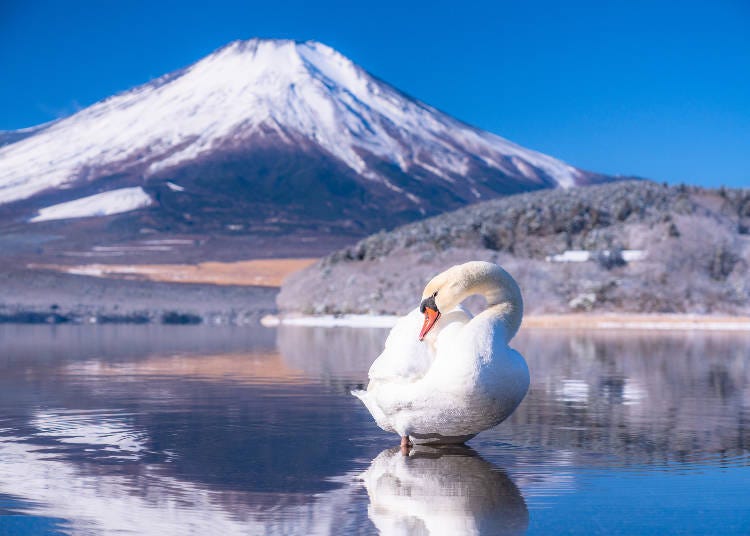
As the largest lake among the Fuji Five Lakes region with the highest altitude and closest distance to Mount Fuji, Lake Yamanaka (Yamanakako) is unsurprisingly one of the hottest places of interest in the area around the ever-popular mountain, rivaling Lake Kawaguchi mentioned above.
The untouched environment here is home to an abundance of gorgeous natural sights with a distinctly rustic vibe. Due to the terrain, the climate around the area is usually cool and refreshing, making it one of the top destinations for summer vacations among local tourists. The area is known for its family-oriented facilities, which include plenty of excellent parks as well as arts and cultural museums.
- Right next to Mount Fuji for close-range admiration; Famous iconic scenic sights like "Mt. Fuji lake sunsets" and "Mount Fuji reflections."
- Sightseeing Boat "Swan Lake"; Lakeshore cycling road; Mount Ishiwari; Lake Yamanaka Teddy Bear World Museum; Mishima Yukio Library Museum; Santa Claus Museum; and many other art and cultural sites.
Recommended places to stay in Yamanakako
・Resort Hotels
・Vacation homes & Villas
3. Fujiyoshida Area
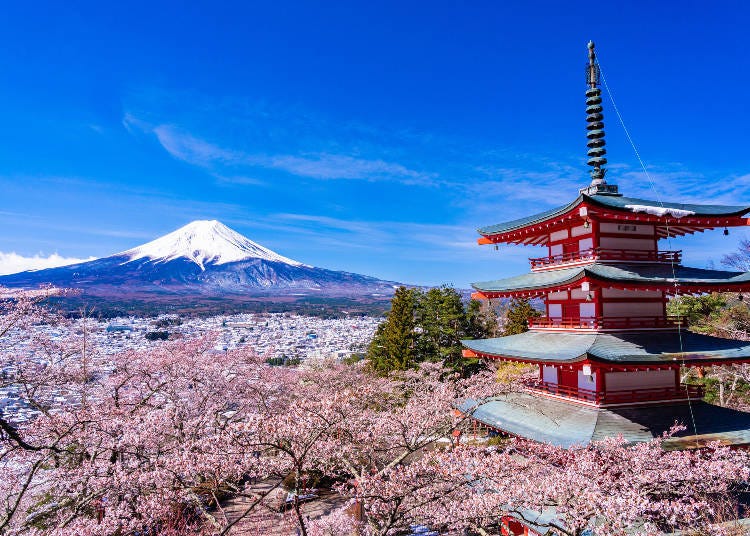
This area is an administrative zone on the southeastern side of Lake Kawaguchi and is directly accessible via highway bus from Tokyo Station and Shinjuku Station. Another option is to take the Fuji Excursion Limited Express straight to the Mt. Fuji stop.
Besides enjoying picturesque views of the lovely Mount Fuji, visitors can also look forward to basking in the tranquil atmosphere of a traditional Japanese town when they visit the quaint Honcho Nichome shopping street.
Bonus: Taking a picture from this street with Mount Fuji hovering majestically in the background results in an evocative snippet that encapsulates man and nature in one shot - a sure hit on social media! There's also a selection of beautiful shrines to peruse in addition to local specialty foods like the Fujiyoshida udon noodles, known for their legendary chewiness.
- Near both Lake Kawaguchi and Lake Yamanaka; Entirety of Mount Fuji can be clearly seen.
- Great place to experience traditional Japanese culture; Retro shopping street with Showa era (1926 – 1989) design; Shrines with Japanese pagodas, etc.
- Easy to get a snapshot of entire Mount Fuji from Honcho Nichome Shopping Street; Arakurayama Sengen Park has photo spots for pictures that will include sakura trees, a five-tiered pagoda, and Mount Fuji; Mt. Fuji Radar Dome Museum, an educational facility that's also a top viewing spot for Mount Fuji.
- Tasty gourmet food at every turn, such as Fujiyoshida udon, etc.; Cafes with vintage decor on Honcho Nichome, such as Cafe Lemon, etc.
Recommended places to stay in Fujiyoshida
・Vacation Homes & Villas
・Glamping Sites
4. Oshino Village Area
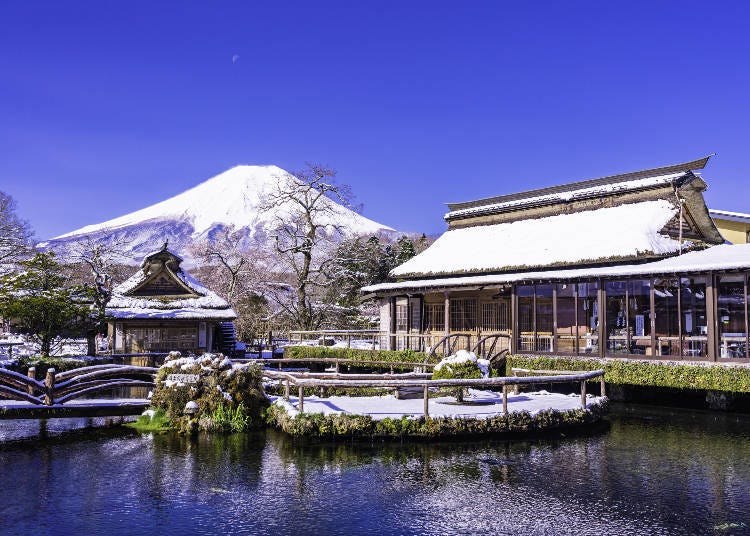
Sharing borders with the southeastern side of Lake Kawaguchi and the northwestern side of Lake Yamanaka, the village area is surrounded by nature for as far as the eye can see and has a reputation for being the best place in Japan to see Mount Fuji on its prettiest side.
As a testament to that, it's not uncommon to see professional photographers making special trips to the village to get a perfect shot of Mount Fuji to beautify their portfolios with.
The most popular attraction here is Oshino Hakkai, a designated Natural Monument of Japan formed by gushing springs of the two lakes the village sits in between. The crystal clear waters of the eight springs here gives off a different feel each season that enhances the surrounding scenery with its splendor.
It takes only about half an hour to reach here by car from Lake Kawaguchi. This area is highly recommended for families with children and travelers seeking the best photo opportunities.
- Rich in native culture and great for experiencing the simple life of a traditional Japanese village.
- Surrounded by beautiful natural scenery; Great Mount Fuji view spot for all seasons no matter the weather.
- Oshino Hakkai; Shinobi no Sato Ninja Village; Asama Shrine; Hachiman Shrine, etc.
- Delicious food such as Oshino tofu, made using pure local spring water; Grilled fish reared in the area's famously clean waters; Seasonal locally-grown summer vegetables, and others.
Recommended places to stay in Oshino Village
・Traditional ryokan inns
・Vacation homes & Villas
・Hostels & Guest houses
5. Fujinomiya Area
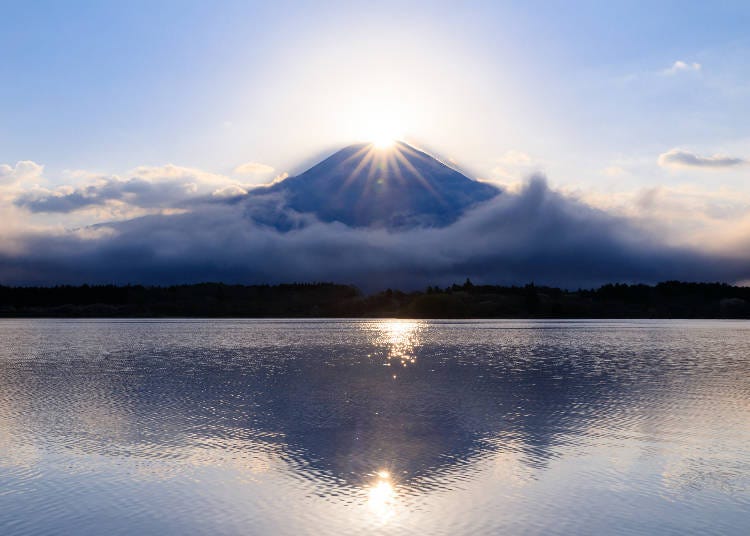
An administrative area that covers the southwestern part of Mount Fuji itself, the Fujinomiya district sits among a wide expanse of untouched nature and is the area where the 5th Station - considered by many to be the starting point for climbing Mount Fuji - is located.
In Fujinomiya, you'll also find the Mt. Fuji World Heritage Centre, Shiraito Falls, Lake Tanuki - the only place in Japan where you can see Diamond Fuji, and Fujisan Hongu Sengen Shrine, amongst many other equally well-known places of interest.
The area is directly connected to Tokyo via highway bus and a one-way trip is only about two hours. No wonder many travelers often visit the area again on their return trips to Mount Fuji!
- Lesser crowds compared to Kawaguchiko or Yamanakako Areas; Slower pace; Top destination for many return visitors on a free and easy schedule.
- Short distance away from Mount Fuji allows for close-up views; Rare sights such as "Mount Fuji reflected" and "Diamond Fuji" are available in specific view spots.
- Shiraito Falls, Lake Tanuki, Mt. Fuji World Heritage Centre, Shizuoka, Fujisan Hongu Sengen Shrine, Fujikawa Starbucks (for a contrasting picture of a modern Starbucks with the ancient Mount Fuji behind!).
- Birthplace of the Fujinomiya yakisoba that took Japan by storm - plenty of restaurants in town providing authentic Fujinomiya yakisoba to please your tastebuds.
Recommended places to stay in Fujiyoshida
・Vacation homes & Villas
Types of Accommodations Around Mount Fuji
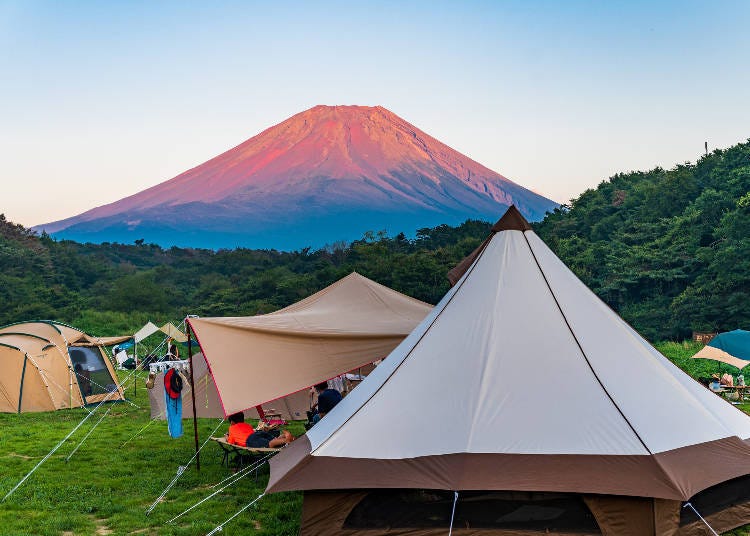
1. Hotels
No prizes for guessing why there are so many hotels located around Mount Fuji! You're spoilt for choice between vacation homes, five-star hotels, and everything else.
For example, the ever-popular Hoshinoya Resorts has a lakeside facility with a clear and unblocked view of Mount Fuji from your own room!
Most hotels have their own indoor bathing pools and will serve delectable dishes made from fresh produce. They may also offer transfer services and local activities, albeit at a cost.
Nevertheless, the excellent service they provide makes it well worth the expense, as evidenced by the crowds of visitors who make these hotels their foremost choice when traveling to the region.
2. Vacation homes & villas
These accommodations generally include a kitchen, utensils, and dining space for you to do your own cooking.
Such rooms or houses are usually more spacious than standard hotel rooms. Because of the privacy they provide, larger groups often prefer to book these accommodations during their trips. Especially since bathing facilities around Mount Fuji often come with a spectacular view!
Going together as a group can almost make it feel like you've chartered the entire place for your luxurious enjoyment at leisure.
3. Hostels
Many hostels have sprung up around Mount Fuji as the mountain is a top-rated destination among foreign tourists.
While these accommodations are simple and services can be rather bare-bones, the staff here can often provide the best first-hand information about places of interest, route schedules, and the weather.
It's also a great place to meet with fellow travelers and has lively discussions about each other's trips and recommended sites. These hostels are a perfect consideration for gregarious young travelers who wish to maximize their enjoyment while keeping costs low.
4. Traditional ryokan inns / Hot spring resorts
Did you know Mount Fuji is an active volcano? That's why plenty of fountains and hot springs can be found nearby!
Many old and established Japanese-style hot spring resorts offer safe access to these healing waters, often in the form of outdoor bathing pools. These inns and resorts have both Japanese-style tatami mat rooms and Western-style bedrooms for guests to choose from.
You may also opt for a room package that comes with exquisitely prepared breakfast and dinner meals. This level of hospitality may not be within everyone's budget, especially since the rooms usually come with a magnificent view of Mount Fuji. Still, it's undoubtedly an extravagant experience that has to be tried at least once in one's lifetime!
5. Camping / Glamping sites
Camping and glamping have been all the rage in Mount Fuji recently. These campsites usually provide camping tents and necessary tools, and some are equipped with BBQ grilling stations too!
You get first-row tickets to the Mount Fuji landscape as it changes appearance throughout the day. Watch its astounding greenery melt into the gentle rays of sunset, then light up again when glittering stars take over the night sky and start your day by watching the sun clamber out from behind Mount Fuji.
The bliss and serenity that envelops you as the day passes and you slowly put your hectic city life behind you is an experience you'll never forget. Campsites usually partner with other businesses to offer eco and sensory tours focusing on finding adventure through the lens of a local.
As you might expect, these tours are a smash hit with visitors from all lands, and you may find something that tickles your fancy as well.
Best Season to Visit Mount Fuji
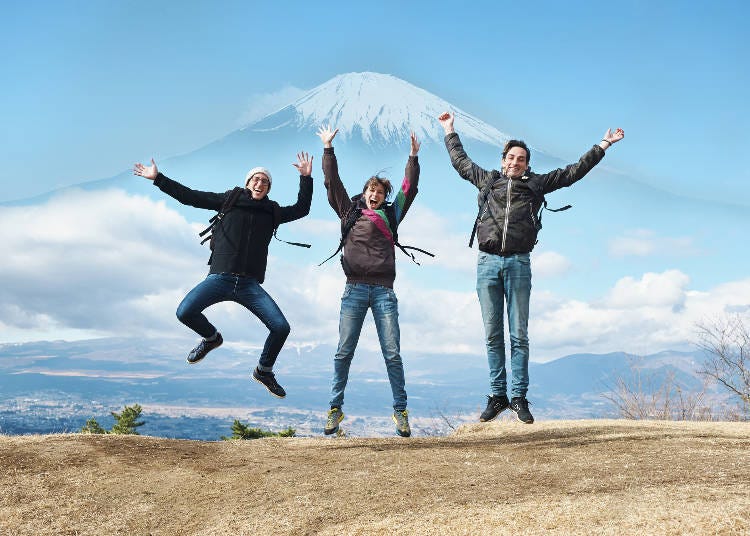
Mount Fuji's unfading popularity means there are large crowds of visitors jostling for its attention all year round. That said, certain periods are not as busy as others.
If you've already decided to stay around the Fuji Five Lakes region, plan your itinerary way ahead of time and book your accommodations as soon as possible to avoid disappointment - especially if you're hoping to get one of the more popular ones!
・Summer (school vacation / climbing season / Obon consecutive holiday)
Summer is the season where you'll find the most people on Mount Fuji for a couple of reasons. Firstly, it's a vacation period, so a rise in visitor numbers is to be expected.
Secondly, hiking or climbing on Mount Fuji is only allowed during summer (specifically from July to September). Therefore be prepared to plan very far ahead to nab your desired accommodation if you'll be visiting during this season, especially during the weekends and the Obon consecutive holiday season.
・After November (Autumn/Winter season)
Mount Fuji is rather packed during autumn as well since there are a number of well-known autumn leaves viewing spots in the region. Even after winter begins, you're unlikely to see a slowdown in the stream of visitors. Local travelers like to come during the end of year and start of year holiday season to enjoy a bit of sightseeing and skiing in their downtime as well.
・After March (sakura season)
The higher elevation of the area around Mount Fuji means that the sakura here blooms much faster than the usual month of April, which is why you'll find more than a few sakura-themed events and activities being held here in March. Since this is also the month of spring vacation in Japan, there will likely be many people in the area doing some sightseeing. Tourists flying in from overseas will need to do a lot of advance planning to secure a local room during this season.
I couldn't book a place to stay near Mount Fuji! What now?
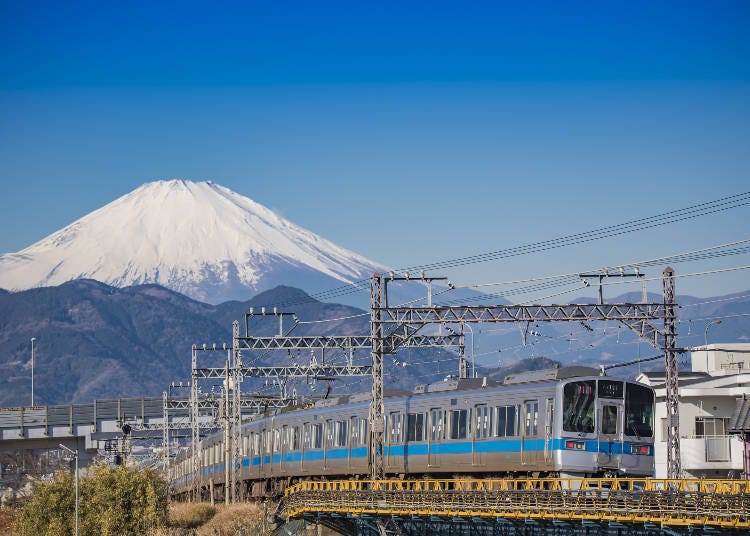
Even if you end up not being able to book accommodations near Mount Fuji due to seasonal congestion, fret not! The area around Mount Fuji is very accessible from large cities like Hakone and even Tokyo itself, where there are plenty of places to stay for all preferences and budgets.
Hakone
Take a bus or a train on the Odakyu line from Hakone to get to Mount Fuji quickly and easily. The Fuji Hakone Pass is a convenient transport ticket that gives you three days of unlimited access to essential transport in designated zones around the Mount Fuji and Hakone area—highly recommended if you plan to visit both places at once!
Shinjuku
Shinjuku is a major hub for transport connections to Mount Fuji. It takes about four hours by highway bus to get to the mountain from here, or about two hours by train. As a matter of fact, many people choose to book accommodations in Shinjuku before and after their Mount Fuji trip and compress their itinerary for Mount Fuji into a day trip to take advantage of this convenience. Not a bad idea at all if it fits in with what you have in mind!
*Prices and options mentioned are subject to change.
*Unless stated otherwise, all prices include tax.
Recommended places for you
-

Japan Summer Sales 2025: Your Ultimate Guide to Shopping Deals In Tokyo, Kansai & More!
-
Ad

Lapoppo Farm, one of Japan's leading makers of sweet potato treats! An in-depth guide to the secrets behind its popularity, including best-selling products and facilities!
-

Safe and Comfortable Summer in Japan! Sunscreen, Cooling Hacks & Other Child-Friendly Summer Essentials
by: Chehui Peh
-

Shizuoka Road Trip: Explore the Home of Mt. Fuji with a 3-Day Rental Car Itinerary
-

Spray Your Shirt Cold?! Japan's Smartest Sweat-Fighting Hacks You Can Buy at Don Quijote
by: Chehui Peh
-

Mitsui Outlet Park Kisarazu Just Got Even Bigger - Here's Why It's Worth the Day Trip from Tokyo
by: Chehui Peh
Inspiration for Accommodations
-

Enjoy Mt. Fuji from the Comfort of Your Room! Recommended Ryokan with Mt. Fuji View
-

Stay Near the Cherry Blossoms! Hotels for Cherry Blossom Viewing in Tokyo
-

Family-Friendly Hotels with Free Shuttle to Disneyland: Convenient Access for a Magical Stay
-

Top Ranked Hakone Hotels with Mt. Fuji View: Enjoy Stunning Scenery from Your Private Space
-

Convenient Tokyo Hotels with Airport Shuttle: Ideal for Families and Heavy Luggage
-

Stunning Tokyo Tower View Hotels: Enjoy Spectacular Scenery from Your Private Space
-

Convenient Asakusa Hotels with Kitchens: Ideal for Extended Family Visits
-

Experience Luxury: Hakone's 10 Best Five-Star Accommodations
-

Enjoy Mt. Fuji Autumn Leaves! Top Hotels Near the Popular Autumn Leaves Corridor
-

Experience Hakone Fall Foliage from Your Room with Stunning Views
-

Where You Should Stay in Shinjuku: Best Areas & 23 Hotels For Visitors
-

Other Space Asakusa: Just Steps from Sensoji Temple! A Next-Generation Smart Hotel for Families and Groups
by: Mayumi Kawai
-

Kichijoji – Explore Tokyo’s Top-Rated Stylish Suburb in Half a Day!
-

Where You Should Stay in Shibuya: Best Areas & 22 Hotels For Visitors
-

Exploring Tokyo Station: 11 Must-Visit Spots Around the Heart of Tokyo
-

Secrets to Shopping in Japan: Guide to Annual Sales in Japan & Where to Shop
by: Miyu Shimada
- #best ramen tokyo
- #what to buy in ameyoko
- #what to bring to japan
- #new years in tokyo
- #best izakaya shinjuku
- #things to do tokyo
- #japanese nail trends
- #what to do in odaiba
- #onsen tattoo friendly tokyo
- #daiso
- #best sushi ginza
- #japanese convenience store snacks
- #best yakiniku shibuya
- #japanese fashion culture
- #best japanese soft drinks















